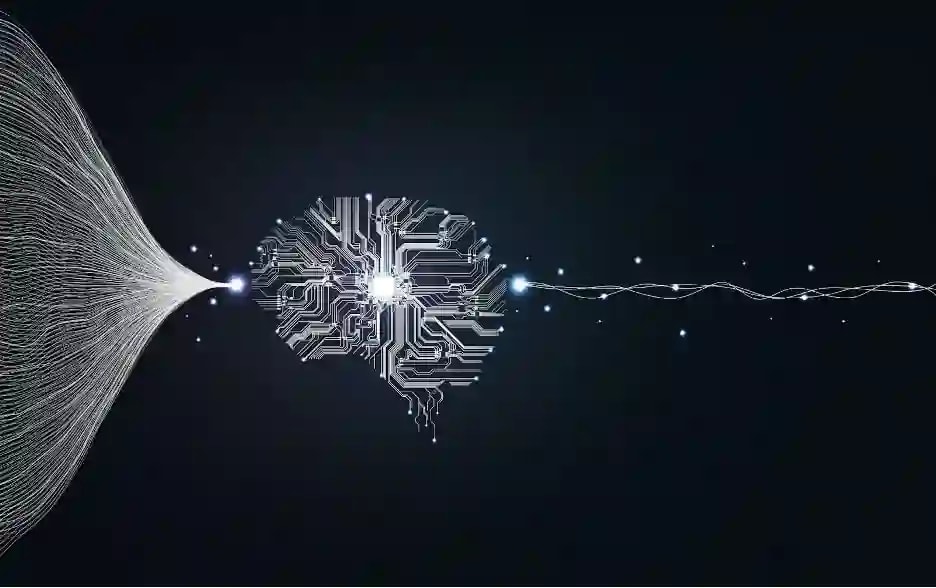
How to Choose the Right Machine Learning Algorithm (Without Losing Your Mind)
Advertisement
Machine Learning Algorithms: A Human-Friendly Guide
Let me tell you something, choosing the right machine learning algorithm doesn’t have to feel like solving a Rubik’s Cube blindfolded. I’ve been working in data science for over a decade, and if there’s one thing I’ve learned, it’s that intuition matters just as much as maht. So let’s break this down in a way that actually makes sense.
The Big Split: Supervised vs. Unsupervised Learning
Supervised learning is like teaching a kid with flashcards, you show them labeled examples ("This is a cat. This is a dog.") until they can guess new ones correctly. So need to predict house prices or filter spam? That’s supervised territory. Yet on the other hand, unsupervised learning is like dumping a pile of unlabeled animal photos on the table and saying, "Group these by similarity." No answers, just patterns. Think email categorization or customer segmentation.
(Side note: Most real-world problems are supervised, but unsupervised learning has its moments.)
The Usual Suspects: Key Algorithms Explained Simply
Linear regression is the granddaddy of them all, fitting a straight line to your data. Shoe size vs. height? Perfect. But life isn’t always linear, which is where logistic regression comes in for yes/no predictions (like "Is this email spam?"). Then there’s K-Nearest Neighbors (KNN), which basically says, "Your new neighbor probably resembles their closest friends." Simple, but surprisingly powerful.
(Pro tip: Choosing the right "K" is half the battle, too small and you overfit; too big and you underfit.)
The Core Machine Learning Algorithms Explained
Now that we've covered the basics of supervised and unsupervised learning, let's dive into the actual algorithms that power modern machine learning. Each has its strengths, weaknesses, and ideal use cases - understanding these differences is key to choosing the right tool for your problem.
Linear Regression: The Foundation
Linear regression is where most data scientists start their journey. At its core, it's about finding the straight-line relationship between an input variable (like square footage) and a continuous output variable (like hoouse price). The algorithm minimizes prediction errors by finding the line where the sum of squared distances to all data points is smallest.

Classification Algorithms
When your output isn't a number but a category (spam/not spam, cat/dog), you'll need classification algorithms:
| Algorithm | Best For | Key Feature |
|---|---|---|
| Logistic Regression | Binary classification | Outputs probabilities using sigmoid function |
| K-Nearest Neighbors (KNN) | Simple multi-class problems | Classifies based on nearby data points |
| High-dimensional data | Finds optimal decision boundaries with maximum margin | |
| Naive Bayes | Text classification | Fast but makes independence assumptions between features |
The Power of Decision Trees and Ensembles
A single decision tree works by asking a series of yes/no questions to partition your data. While simple trees can be prone to overfitting, their real power comes when combined into ensemble methods:
- Random Forests: Builds many trees on random subsets of data and features, then combines their votes. Great for avoidig overfitting.
- Boosted Trees: Sequentially builds trees that correct previous trees' errors. Often more accurate but requires careful tuning.
- XGBoost: A particularly powerful boosted tree implementation that dominates many machine learning competitions.
The Neural Network Revolution
The magic of neural networks lies in their ability to automatically learn hierarchical feature representations. Unlike traditional algorithms where humans must engineer features, neural networks discover these patterns themselves through hidden layers:
- The first layer might learn simple edges in an image
- The next layer combines these into shapes
- Higher layers recognize complex objects like faces or animals
- The final layer makes the actual prediction
The "deep" in deep learning refers to having many such hidden layers that progressively build more sophisticated understanding of the data.
Unsupervised Learning Approaches
When you don't have labeled data but stil want to find patterns, unsupervised techniques come into play:
Clustering Algorithms
The most common approach is k-means clustering:
- Randomly place k cluster centers in your feature space
- Assign each point to its nearest center
- Recalculate centers based on assigned points
- Repeat until clusters stabilize
Taming High-Dimensional Data
Dimensionality reduction techniques like PCA (Principal Component Analysis)
A classic example: if height and length are highly correlated in fish measurements, PCA might combine them into a single "size" dimension while maintaining nearly all the useful information.
Understanding the Core Machine Learning AlgorithmsNow that we've covered the basics of supervised and unsupervised learning, let's dive deeper into some of the most important algorithms you'll encounter. Each has its strengths, weaknesses, and ideal use cases - knowing which to reach for can make all the difference in your projects.
The Workhorses: Regression Models

Linear regression is where most data scientists cut their teeth. At its heart, it's about finding that straight-line relationship between your input and output variables. Think predicting house prices based on square footage - more space generally means higher price, in a nice linear fashion. But here's the thing people often miss: while the math behind it's simple, getting good results requires careful feature selection and understanding of your data's limitations.
Then there's its cousin, logistic regression, which flips the script for classification problems. Instead of predicting numbers, we're estimating probabilities - like the chance an email is spam based on word frequencies. The "sigmoid fnction" it usees creates that nice S-curve that squashes values between 0 and 1. And it's surprisingly powerful for binary decisions, though it does assume features contribute independently to the outcome (that "naive" assumption we mentioned earlier).
The Power of Proximity: K-Nearest Neighbors
KNN takes a completely different approach - no fancy equations here, just good old-fashioned "birds of a feather flock together." Want to know if someone's likely to buy your product? Look at what their most similar customers did. The beauty is in its simplicity, but choosing that magic number K (how many neighbors to consider) is where things get tricky.
A small K makes your model jumpy - too sensitive to noise. Too large, and you might smooth over important local patterns. There's no universal right answer either - it depends entirely on your specific dataset and problem domain. This is where techniques like cross-validation come into play, letting you test different K values systematically rather than guessing.
Slicing Through Complexity: Support Vector Machines
SVMs are like the precision lasers of classification algorithms. Instead of just any old dividing line between classes, they hunt for the one with maximum margin - the widest possible buffer zone between groups. This focus on boundary cases makes them particularly robust against overfitting.
The real magic happens with kernel functions though. These mathematical tricks let SVMs find complex nonlinear boundaries without explicitly transforming your features. Imagine being able to separate intertwined spirals of data points with what's essentially a fancy version of "draw the rest of the owl." The RBF (radial basis function) kernel is particularly popular for its flexibility in handling various shapes.
Trees and Forests: Decision-Based Approaches
Decision trees mimic how humans naturally make choices through a series of yes/no questions. Is the custommer's income above $50k? Check. Do they visit more than twice weekly? Check. Then maybe they're high-value targets for your premium service. The algorithm automatically determines which splits create the purest subgroups - those where most members share the same outcome.
The ensemble methods built on trees are where things get really interesting:
- Random forests: Dozens or hundreds of trees voting together, each considering random subsets of features. This "wisdom of crowds" approach dramatically reduces overfitting.
- Boosted trees: Sequential improvement where each new tree focuses on correcting its predecessors' mistakes. Models like XGBoost have dominated machine learning competitions with this approach.
The Neural Network Revolution
Neural networks represent a paradigm shift by automatically learning feature representations. Where traditional methods rely on human-engineered inputs (like calculating BMI from height/weight), neural nets discover these intermediate concepts themselves through hidden layers.
A single-layer perceptron isn't much smarter than logistic regression, but stack multiple layers deep (hence "deep learning"), and suddenly you have models recognizing cats in photos or translating between languages. The tradeoff? You sacrifice interpretability - those learned features often become inscrutable mathematical constructs rather than clean concepts like "vertical lines." They also demand significantly more data and computing power than traditional algorithms.
The Unsupervised Side: Finding Hidden Patterns
When labels are scarce or you're exploring uncharted data territory, unsupervised techniques shine:
Clustering with K-Means
The go-to for grouping similar items when you don't know categories in advance. Retailers use it for customer segmentation; biologists for identifying cell types. The key challenge? Choosing K (number of clusters). The elbow method (looking for diminishing returns in variance explained) helps somewhat, but domain knowledge often trumps statistical measures.
Dimensionality Reduction via PCA
Principal Component Analysis is like compressing a spring - you're trying to preserve as much original structure while eliminating redundancy. In image data, this might mean recognizing that 90% of variation comes from lighting changes rather than actual content differences. By focusing on principal components explaining signfiicant variance, you simplify problems without losing predictive power.
Final Thoughts: Choosing the Right Machine Learning Algorithm
Machine learning offers a powerful toolkit for solving a wide range of problems, but selecting the right algorithm depends on understanding your data and objectives. Supervised learning, whether regression or classification, works best when you have labeled data and a clear target to predict. Unsupervised learning, on the other hand, helps uncover hidden patterns when labels aren’t available.
Key Takeaways
1. Start Simple: Linear regression and logistic regression are excellent starting points for regression and classification tasks, respectively. They provide a strong foundation before moving to more complex models.
2. Consider Your Data Structure: If relationships between variables are nonlinear, algorithms like KNN, SVM with kernels, or decision trees may perform better.
3. Ensemble Methods Boost Performance: Techniques like random forests and gradient boosting combine multiple weak models to create a robust predictor, often outperforming single-model approaches.
4. Neural Networks for Complex Patterns: When dealing with high-dimensional data (e.g., images or text), deep learning models can atuomatically extract meaningful features without manual engineering.
5. Yet unsupervised Learning Reveals Hidden Insights: Clustering (K-means) and dimensionality reduction (PCA) help organize unlabeled data and simplify feature spaces.
The best approach is often iterative, experiment with different algorithms, fine-tune hyperparameters, and validate performance. No single method is universally superior; the right choice depends on your problem’s unique constraints and goals.
The bottom line? Machine learning is as much an art as it is a science. With practice, you’ll develop an intuition for which tools work best, and when to break the rules.
Advertisement
You may also like
Advertisement









